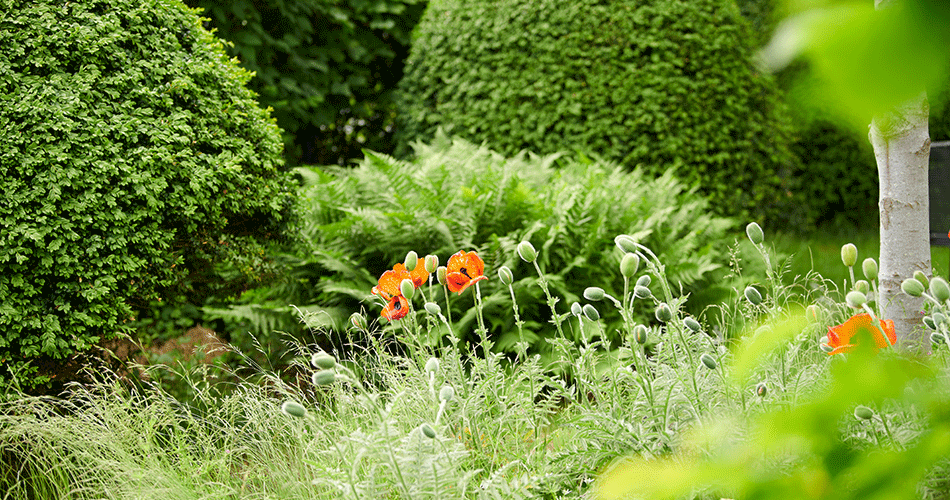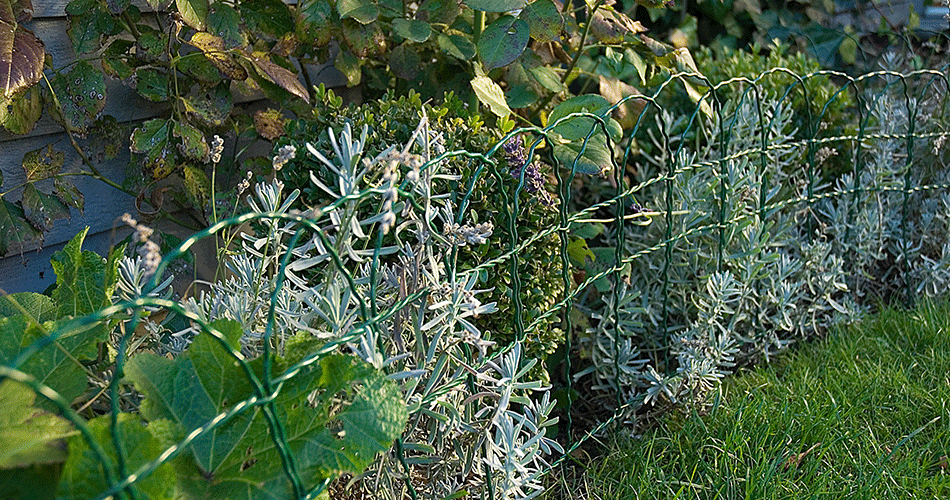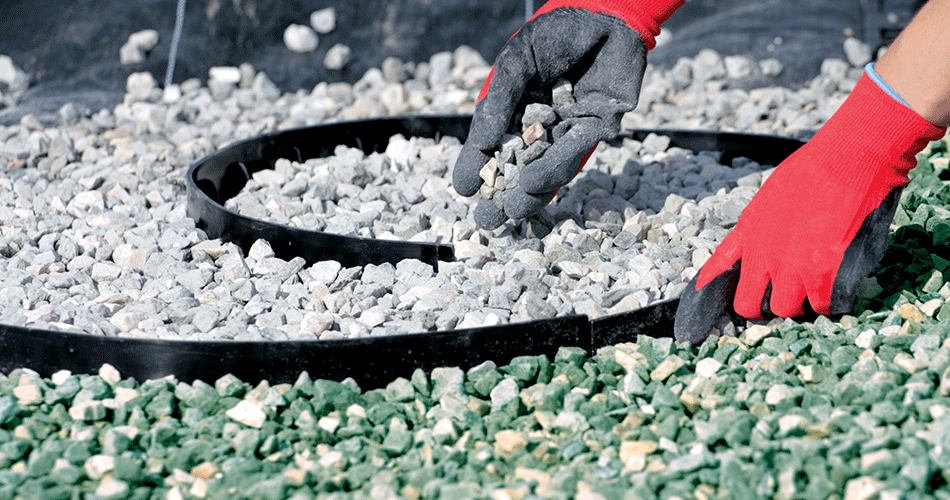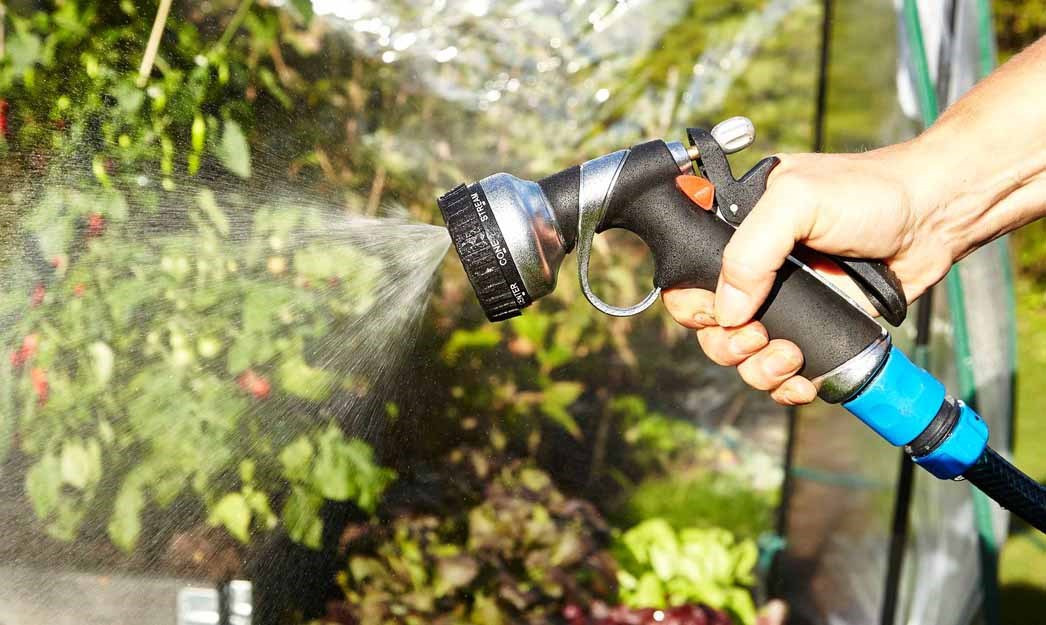How to create a vibrant flowerbed
When planning the layout of your flowerbed, there are several things to consider. First of all, choose plants that thrive best in your area. Also consider how the growth and height of the flowers will affect the entire flowerbed. Tall plants can give your flowerbed depth and structure, while lavender and rock garden plants can create beautiful contrasts.
It is important to think about the flowering time of your plants. By choosing plants that bloom at different times, you can ensure that your flowerbed is in full bloom throughout the season. Also consider how different perennials can breathe life into your flowerbed throughout the summer and even into early autumn.
Finally, have a plan to keep your flowerbed free of weeds. A well-groomed flowerbed is not only beautiful, but it can also improve the appearance of your house and garden as a whole.
So grab your spade and let’s start creating your new flowerbed.
How do I plant flowers in my flowerbed?
Planting flowers and creating an appealing flowerbed may seem daunting. But with the right approach, you can quite easily create a beautiful and vibrant flowerbed that will delight you all season. Here is a step-by-step guide on how to plant flowers in your flowerbed.
- Prepare the soil: First you need to prepare the soil. Remove weeds, stones, and other unwanted elements. Add compost or other organic matter to improve the soil’s structure and nutrient content.
- Choose your plants: When choosing plants for your flowerbed, think about which plants thrive best in your area. Also consider how different perennials can breathe life into your flowerbed throughout the summer and into early autumn. Tall plants, like roses and shrubs, can give your flowerbed depth and structure, while lavender and rock garden plants can create beautiful contrasts.
- Plant your flowers: Make a hole in the ground deep enough to accommodate the plant roots. Place the plant in the hole and fill it up with soil. Make sure the plant is level with the soil, like it was in its pot. Water thoroughly.
- Care: Keep your flowerbed healthy by regularly watering and weeding and adding compost or fertiliser as needed. More on that later.
The growth of plants can have a huge impact on the appearance of your flowerbed. Tall plants can create a dramatic point that attracts attention, while shorter plants can help fill the space and make your flowerbed look full. Different species of plants can also add variety to your flowerbed. And variety is a good thing in a garden.
By choosing various perennials that bloom at different times, you can ensure that your flowerbed is in full bloom throughout the season. This can turn your flowerbed into a dynamic and changing landscape that always has something new and interesting to offer.
If you create several flowerbeds in your garden, a large part of your garden will always be in full bloom.
How to create a beautiful flowerbed with different flowers
Creating a beautiful flowerbed is more than just planting flowers. It’s about choosing the right plants, planning their location, and making sure they thrive in the best possible way. It’s all about creating harmony and balance in your flowerbed to ensure it’s as beautiful as possible.
Different flower species can add a lot of variety and diversity to your flowerbed. Tall plants such as roses and shrubs can create a dramatic focal point, while lavender and rock garden plants can create beautiful contrasts.
You can also use different perennials for a flowerbed that blooms all summer. By choosing plants that bloom at different times, you can ensure that your flowerbed is in full bloom throughout the season.
You need to choose your plants wisely. Think about how they will look together and how their growth and flowering will affect the entire bed. Also consider how they will look in relation to the rest of your garden and house. Remember that your flowerbed should look good not only in summer, but all year round.

How to care for your flowerbed
Having a flowerbed is like having a living work of art in your garden. At least that’s how it may feel. But for it to bloom and thrive, it requires regular care. Here are some tips on how to keep your flowerbed healthy and beautiful.
- First, it’s important to water your plants regularly. But remember that too much water can be just as harmful as too little. Overwatering can cause root rot – so be careful.
- Remove weeds from your flowerbed regularly. Weeds compete with your plants for nutrients and water, so it’s important to keep them at bay.
- Add compost or other organic matter to the soil in your flowerbed. This will improve soil structure and nutrient content and help your plants thrive.
When it comes to choosing plants for your flowerbed, it’s important to consider which plants thrive best in your area. The better they thrive, the less care they need. Not all plants can cope with every type of climate or type of soil. And in Denmark, we have constantly changing weather, so the flowers must be able to tolerate this.
Proper flowerbed pruning and edging
Creating a beautiful flowerbed is not only about choosing the right plants and planting flowers. Your also need to prune your plants and the flowerbed needs proper edging. Pruning your plants promotes their growth and thus their beauty.
By edging your flowerbed, you can create a clear and appealing shape. Both pruning and edging can improve the overall impression of your flowerbed.
How to properly prune your plants
Some plants, like roses and shrubs, thrive best when pruned regularly. Other plants, like perennials, only require pruning under certain circumstances.
To be sure about which plants to prune and when, you need to do some research before choosing the flowers. Learn about the different species in your flowerbed and find out how and when to prune them. In general, you should prune your plants in early spring before they start growing.
When pruning your plants, be sure to do so correctly.
- Use sharp pruning shears and make clean cuts.
- Always prune just above a leaf or bud, and avoid leaving stumps.
Why your flowerbed needs a clear edge
By creating a clear edge for your flowerbed, you can keep it neat and tidy. It can also make it easier to structure your flowerbed and care for your plants.
There are many ways to edge your flowerbed. You can use natural materials, like stone or wood, or you can use landscape fabric or plastic edging. You can also plant tall plants or shrubs around your flowerbed to create a natural edge.
When creating an edge for your flowerbed, think about how it will look along with the rest of your garden. Consider how the edge will affect the shape of your flowerbed and how it will look in different seasons. By creating an attractive and functional edge for your flowerbed, you can improve its appearance and make it much easier to maintain.
Flowerbed enclosure
Enclosing your flowerbed is a great way to protect your plants, create privacy, and add an extra dimension of beauty to your garden. It allows you to create a more private and welcoming space where you can enjoy your flowers in peace and quiet. Let’s look at how you can use different types of enclosures in your flowerbed.
Use natural materials
Natural materials such as hedges and shrubs are a smart way to create privacy and enclose your flowerbed. Tall plants and shrubs are an obvious choice. They can give your flowerbed a beautiful and natural enclosure, while protecting your flowers from the wind and weather. And they create privacy in your garden, depending on how tall they are and where you place them.

When choosing plants for your natural enclosure, consider their height, growth form, and how they will look in different seasons. Choose plants that complement each other as well as your flowers. For example, a combination of tall shrubs and shorter flowering plants can create a beautiful and dynamic enclosure.
Also, remember to choose plants that thrive in your climate and soil type. This will ensure that they grow well and create a strong and healthy enclosure for your flowerbed.
Use artificial materials
Artificial enclosures, like fences and screens, are another great option for protecting and shielding your flowerbed. They can give your flowerbed a clear and defined shape while protecting your flowers from wind, animals, and other potential damage from the weather.
When choosing an artificial enclosure, consider the material, design, and how it will look in your garden. A wooden fence can give a warm and natural feel, while a metal fence can give a more modern and streamlined look. Also consider how the enclosure will look in different seasons and in different light.
Whatever type of enclosure you choose, make sure it’s sturdy and durable enough to protect your flowers. It must also be easy to maintain so that you can keep your flowerbed beautiful and healthy without too much hassle.

Weeds in your flowerbed
Have you ever wondered why it’s important to prevent weeds in your flowerbed? Weeds aren’t just annoying and ugly green intruders.
They can actually steal nutrients, water, and sunlight from your flowers, which can prevent them from growing and blooming fully. In addition, weeds can also host pests and diseases that can harm your flowers. So, if you dream of a blooming and healthy flowerbed, it’s important to get rid of and prevent weeds.
How to identify and remove weeds in your flowerbed
The first step to preventing weeds is to be able to identify them. Weeds can vary in shape, size and colour, but they often have a rapid growth rate and can quickly take over a flowerbed. So, if there’s something suddenly growing wild in your flowerbed that you have not planted yourself, then it is probably a weed.
Once you’ve identified the weed, it’s time to remove it. Pull up the weed by the roots to prevent it from growing back. Remember to use garden gloves and tools, like a weeder, to make the job easier and more efficient.
It is important that you remove all the roots up to make sure the weeds do not grow again.
Here you will find everything for weed control in your garden.
Preventing weeds with natural methods
There are many natural methods you can use to prevent weeds in your flowerbed. One of the most effective methods is to apply a layer of mulch or wood chips. Not only can this help keep the soil moist and improve soil fertility, but it can also prevent weed seeds from germinating. Another method is planting close together. This can help shade the soil and prevent weeds from growing.
By preventing weeds, you can ensure that your flowers get the best conditions to grow and bloom. And when you use natural methods to remove weeds, you also protect the environment as much as possible.



